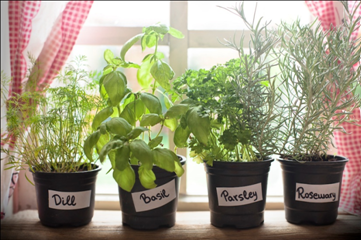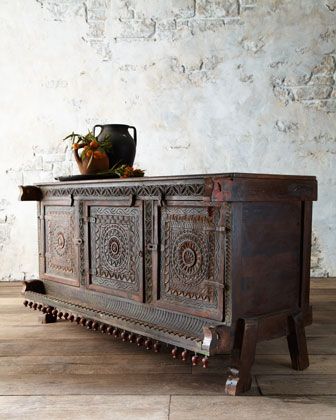Planting your own herbs in your garden is a convenient and healthy way to flavour your home-cooked meals
Herbs gardening is not hard at all and usually takes very little space so it is common for people living in apartments to have a couple of herb pots on their balcony. Price is not really the concern as herbs are usually cheap enough if you may compare the price of a few sprigs of sage, basil, or thyme, but you cannot beat the freshness of home-grown seasonings.
Planting your own herbs simply means that you will be able to get the full flavour, and when appropriate, the optimum medicinal features of the herbs. Indeed, the healing herbs contain substances and volatile oils that would weaken fast as soon as harvested. Same goes with the flavour of seasoning herbs actually.
Now, talking about convenience, imagine yourself selecting a few fresh herbs from a spot near your kitchen anytime you need it! You also have the liberty of planting your most favourite herb, have a constant fresh stock at hand. Compare this to the effort of going to the grocery store and buying them without any idea of how fresh it is is a very different story. Not to forget how little you know about the potential chemical used to keep them fresh as long as possible.
A small space is enough to grow a lot of different herbs
To ensure convenience, it is best recommended if you reserve a spot in your garden, a few walks from your kitchen door. If you do not possess sufficient space, you can plant the herbs in different sizes of tubs, pots, containers and suitable boxes. A lot of herbs need light, plenty of sunshine, and well-drained soil. For instance, horseradish requires a rich deep soil, while on the other hand, mint likes damp soil, and because of its expansive nature, mint needs more space compared to other herbs. Thus, these herbs are most practical to be planted in a separate location. An old pail with its bottom removed will be an excellent container to isolate them.
Many deco/trendy items are available to get your little herbs farm indoor. We even have reclaimed Ulin pot covers that gives an extra classy touch to your small indoor garden.
GROWING HERBS IN CONTAINERS
In cases where it is inevitable to use containers or pots, the required depth for most herbs is somewhere around 10-12 inches. Smaller herbs will basically fit in containers with a depth of at least 6-8 inches. Some bigger herbs like sage, rosemary, or bay tree will do excellent in much bigger containers.
Right in your kitchen, ready to use!
For effective container growing, efficient drainage is essential and drainage exits should be covered with a lot of fine wire net or broken pot shards. Containers should be disregarded to be put directly on the ground. It should be raised on stones or on tiles. It will help in making sure that your herbs have appropriate drainage, especially during winter when there is a risk of water accumulation. It will also help in preventing frost damages during the cold months.
In order to grow at their optimum condition, herbs would love some compost, especially those which are planted in containers. There are tons of available ready-made compost that you can select from. However, in support of sustainable development, you can basically do your own compost from your food scraps. We invite you to read the 2 parts Kaltimber articles about making your own compost:
http://www.kaltimber.com/blog/2018/10/22/five-easy-steps-in-making-your-own-compost-part-12
http://www.kaltimber.com/blog/2018/10/29/five-easy-steps-in-making-your-own-compost-part-22
Baskets and containers require regular feeding and watering. A complete renewal of compost should also be scheduled every four to five years while transferring them into larger containers. Shallow window-boxes and minimal pots should be changed on a yearly basis. You have to ensure to consider the proper height for each plant to avoid fall over and instability.
Many tutorials are available online to teach you and help you to start this fun in-house farming.






















